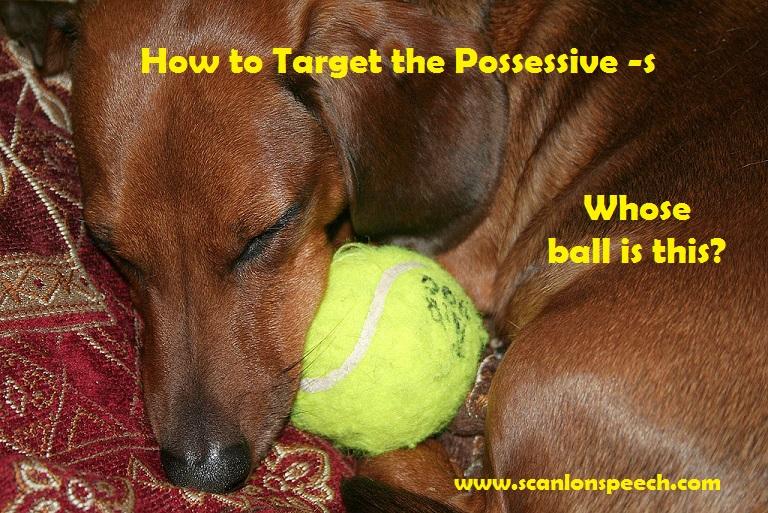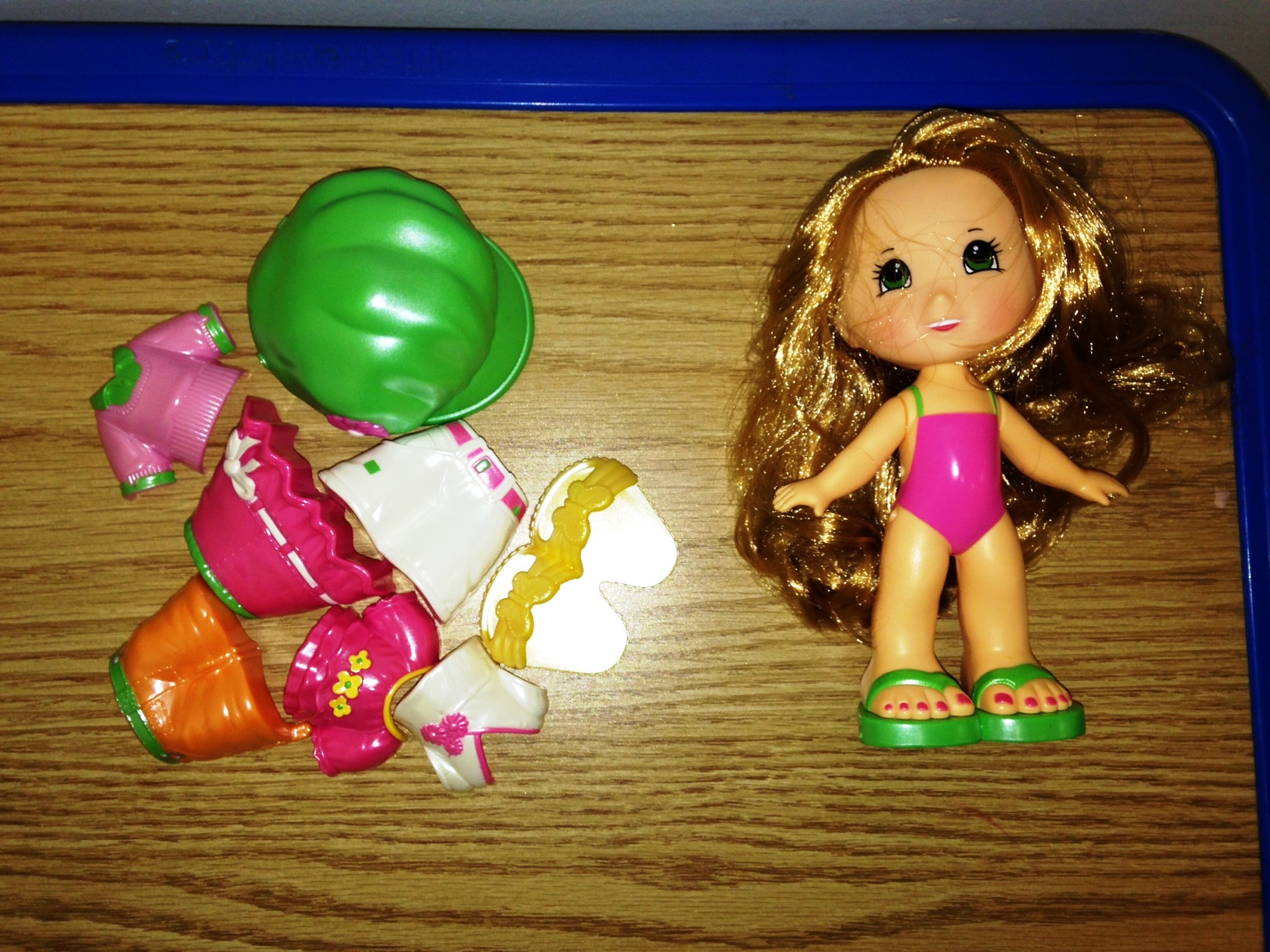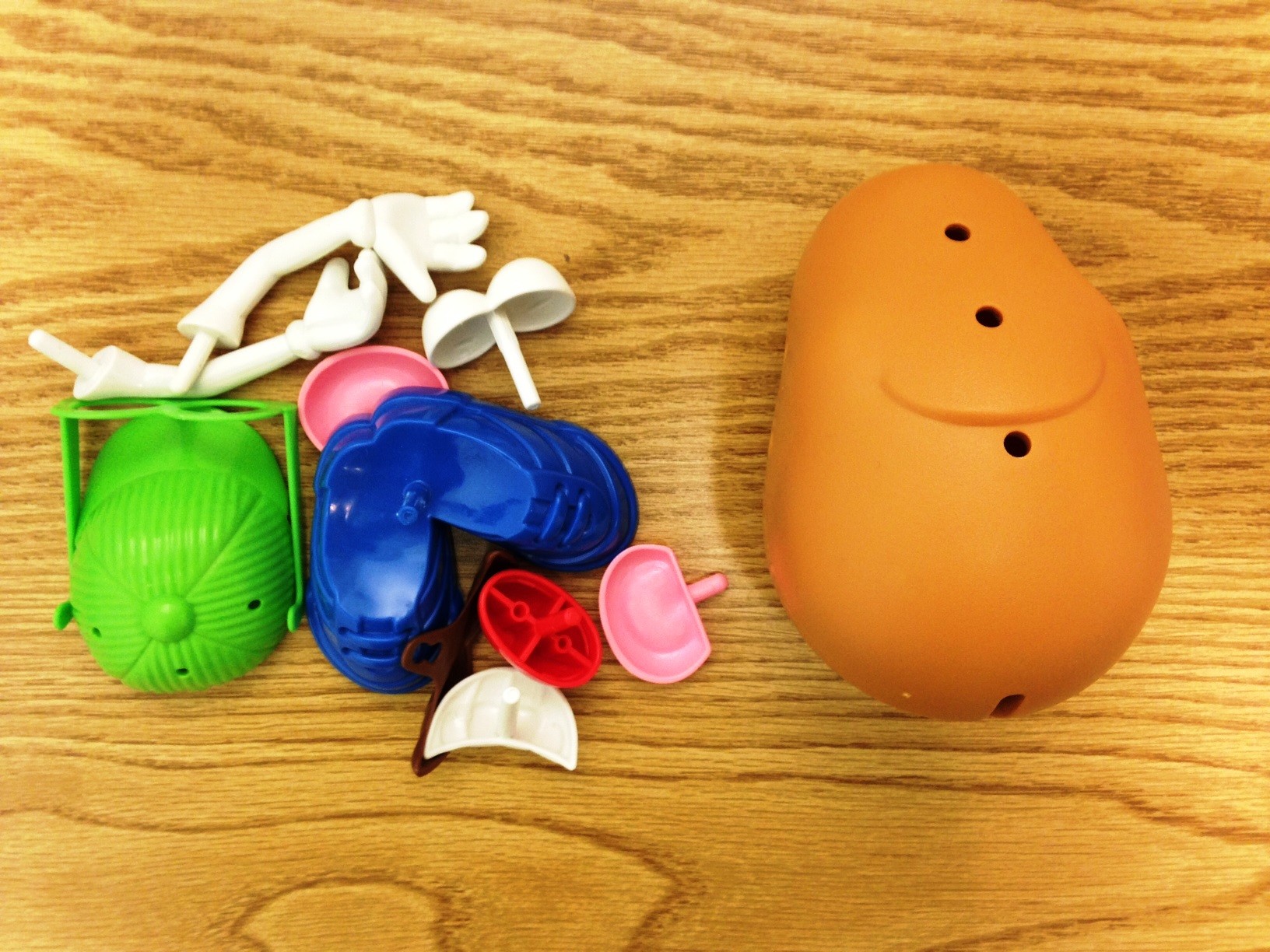Sign Up For Our E-Blast To Receive Information on our Books, Speech Therapy materials and our latest freebies!
Speech Therapy for Preschoolers: How to Target the Possessive ‘s
Speech Therapy for Preschoolers: How to Target the Possessive ‘s
Photo Credit: weeghostie
Recently, I’ve worked with several preschoolers who were omitting the possessive – ‘s. Instead of “daddy’s shoe” it would be daddy shoe or “Mary thumb” not Mary’s thumb. Children usually begin to mark possession by using the name of the possessor before the object. Thus, if the child said daddy shoe, he is indicating that the shoe belongs to daddy and he demonstrates understanding the concept of possession. It’s also important to note that some of my clients had fairly good phonology skills and were no longer deleting final consonants. The phonological process of final consonant deletion can be common in children up to the age of 3 years old. This confirmed that they weren’t deleting the -‘s just because they were in the habit of deleting the final consonants. Thus, I embarked on targeting the possessive – ‘s!
Acquisition of the possessive –s is variable in young children, according to most norms it should be acquired by 3 years and 2 months. The possessive –’s is typically acquired after the plural s (as in cats, dogs, toys) but before the third person singular (as in walks, talks, runs).
Rather than using pictures to begin targeting the possessive –’s, I used objects. This is because 3 dimensional objects, whether they’re articles of clothing or toy body parts, are tangible and can be manipulated. Also, I elected NOT to incorporate the client’s own objects or body parts because I found that the child would naturally want to say “my nose” or “my shirt”. I didn’t want them to fall into the habit of talking like Elmo by referring to themselves in the 3rd person.
1. Select two sets of toys
2. Create a scenario
- Come up with names (“This is Sue” and “This is Lee”) and make up some scenarios that required Sue and Lee to get dressed or ready before going outside or to some fun event. For instance, it can be cold and our fictitious characters Sue and Lee want to make a snowman and in another scenario it can be hot and they can go to the beach.
3. Designate items that belong to each character
- I say, “This is Sue’s pile of _______” and this is Lee’s pile of ________(clothes, parts, accessories, stuff, etc). Notice how I’m using the possessive-‘s! I point out that Sue and Lee like to share but they can’t wear the same clothes because they’re not the same size. My pile idea was inspired from Carrie Clark’s fantastic e-book entitled, Speech and Language Therapy Guide: Step-by-Step Speech Therapy Activities to Teach Speech-Language Skillls at Home or in Therapy” . In it Carrie shares 4 different ways to target possessive –’s and includes picture cards, goals, handouts, and progress charts. I have the premium version which includes 554 pages of MANY activities and strategies for toddlers to school aged children to help target early communication, vocabulary development, grammar, speech sounds, and social skills. It’s a great go to resource!
4. Take turns
- Once everything is divided up, start dressing the dolls or getting them ready to go on their big adventure.
- Take turns putting on an article of clothing or putting in a body part (if using Potato Head). I carefully and purposefully say exactly what I’m doing. When I pick up Lee’s shirt, I say “This is Lee’s shirt.” and put it on. Next, is the child’s turn and he or she can choose any item as long as he or she uses the possessive –’s with the carrier phrase “This is __________(Lee of Sue’s) ________(article of clothing or body part). If the child forgets to use the carrier phrase, then ask “Whose is this?” while pointing to the object he or she is holding. The key here is to provide numerous models and repetition to facilitate learning.
5. Over-emphasize the –’s
- Tell the child you are going to be silly by saying the -‘s for a really long time. It’s important to point this out to the child because you want the him or her to model the –’s and remember to use it. You can also use a visual cue by showing a picture of a slide and tracing your finger down the slide while you say the -‘s or you can take your finger to the inside of your arm and trace it from your elbow to your hand while saying -s.
I hope you’ve found this helpful! If you have any other tricks or tips, please comment below. And, don’t forget to check out Carrie’s Clark’s awesome book at Speech and Language Kids!
Kimberly Scanlon, M.A. CCC-SLP is a speech language pathologist, an author and a mother. As the owner of Scanlon Speech Therapy, LLC, a unique boutique practice in Bergen County, Kimberly embraces individuality and treats the whole person. Her goal is to spread compassion, hope, and some speech, language and literacy tips one moment, one person at a time. Her first book, My Toddler Talks: Strategies and Activities to Promote Your Child’s Language Development and her her second book, Learning to Read is a Ball
are available for purchase at online at Amazon and Barnes and Noble.





